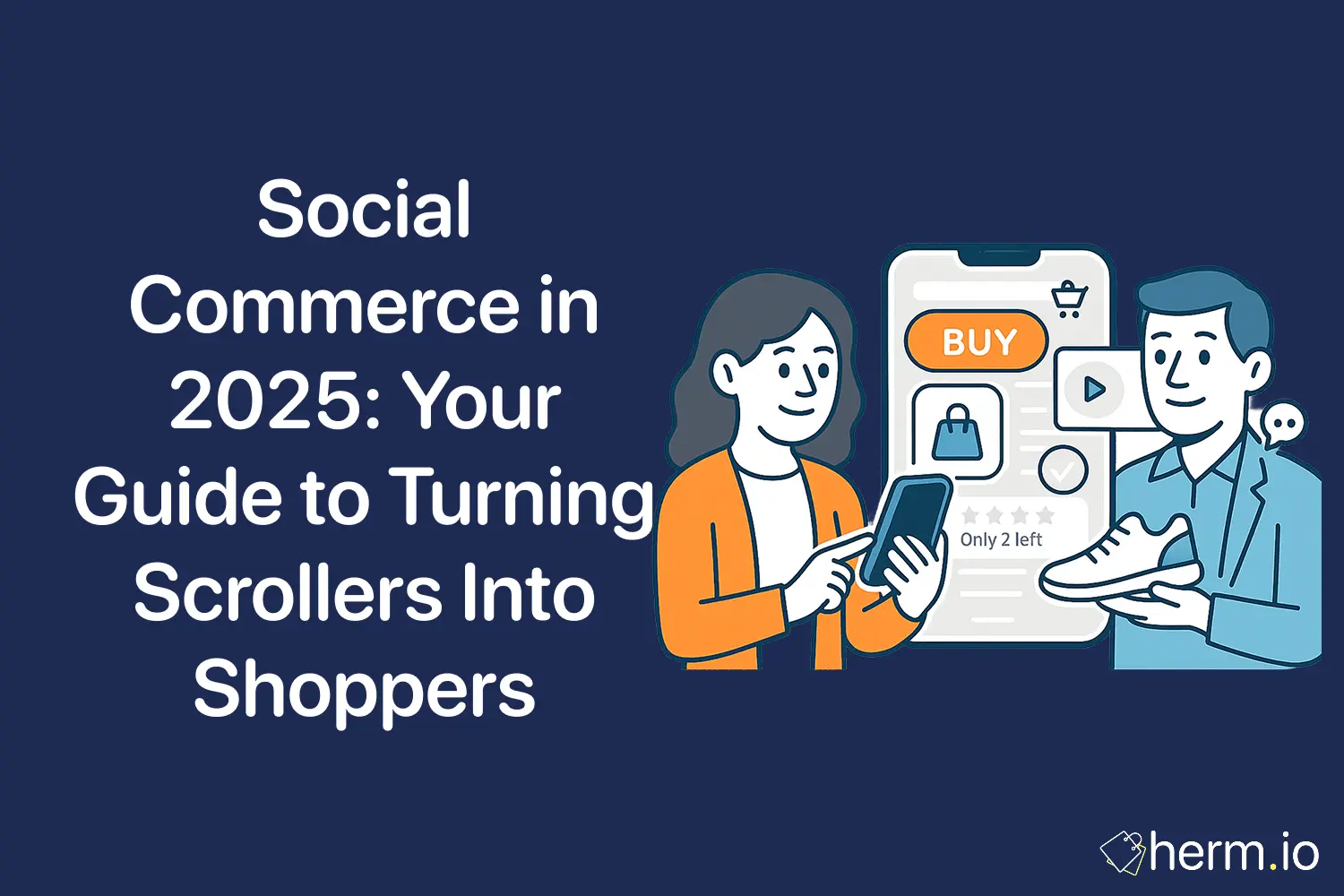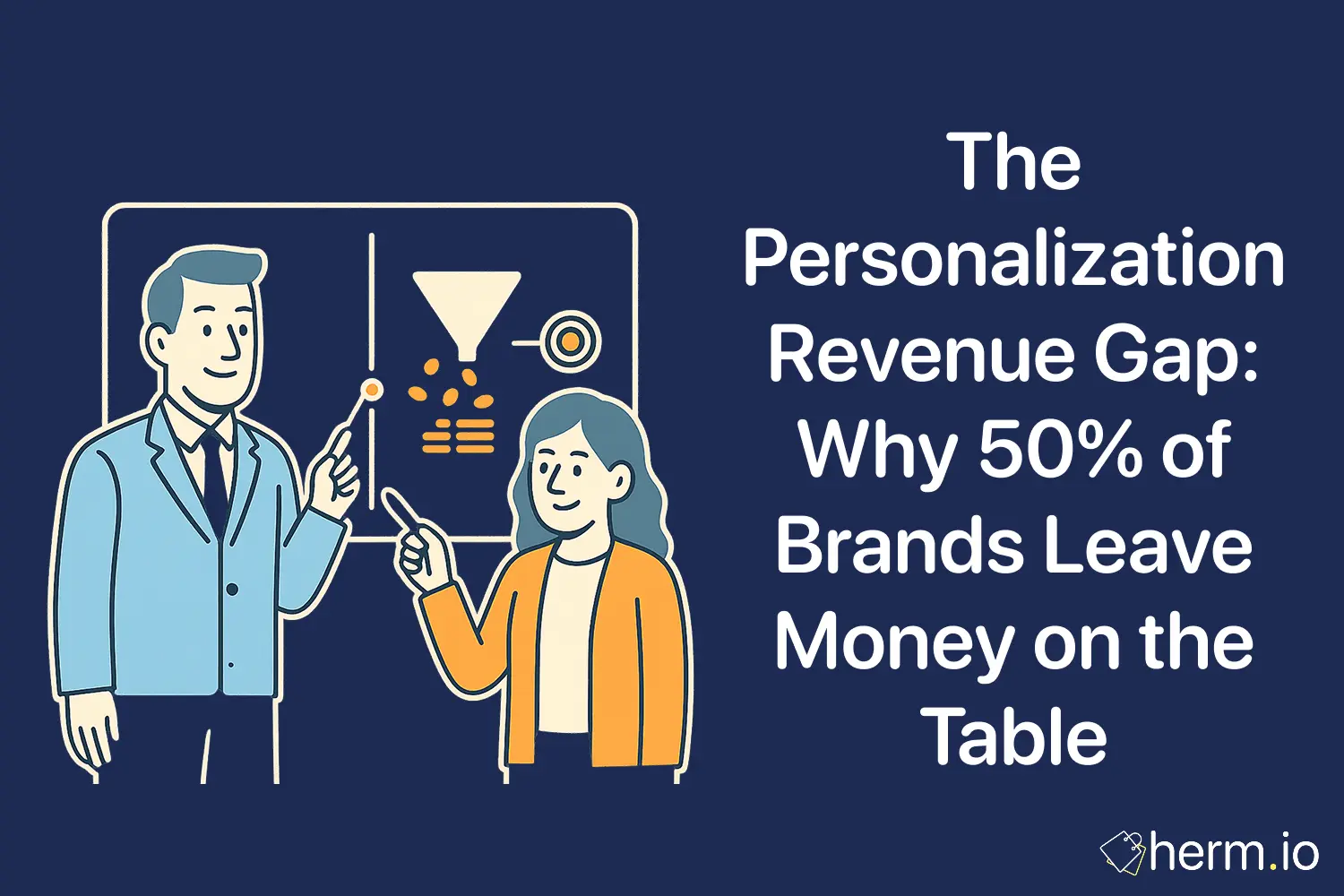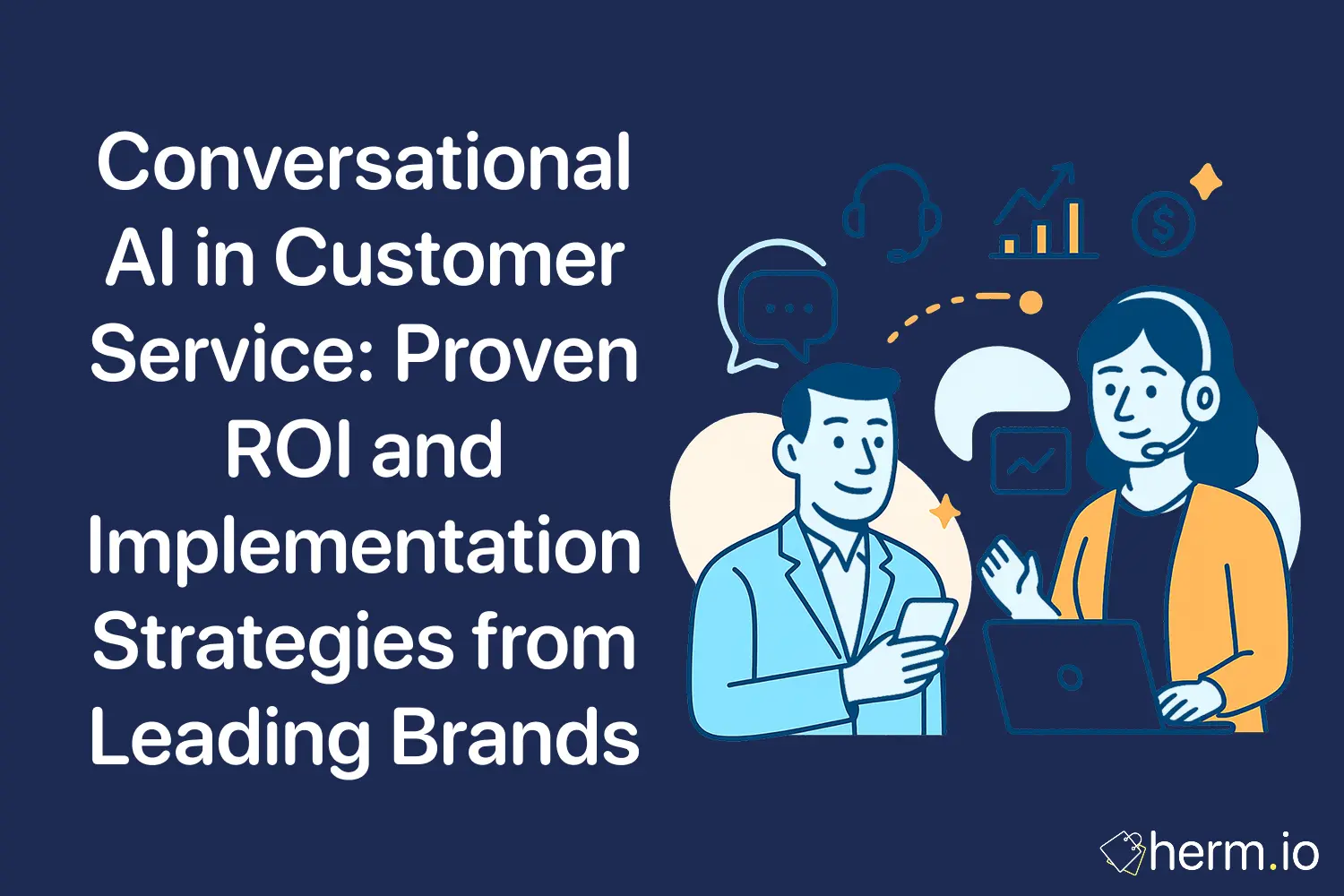
Here's what actually works in personalisation: stop debating AI versus rules and start building systems that deliver measurable returns. After analysing hundreds of campaigns across retail, finance, and B2B sectors, the most successful marketers combine both approaches strategically rather than choosing sides.
The results speak for themselves. Companies implementing hybrid personalisation strategies see 19% higher revenue growth compared to those using single-method approaches. Yet most marketing teams remain stuck in an either-or mindset, missing opportunities to create scalable, profitable customer experiences.
This practical guide examines exactly how rule-based and AI-driven personalisation work, where each approach delivers maximum ROI, and how to build integrated systems that perform consistently. You'll discover specific implementation frameworks, verified case studies across seven industries, and actionable strategies for optimising your current personalisation investments.
Understanding Rule-Based Personalisation Foundations
Rule-based personalisation operates like a well-designed decision tree. You establish clear conditions, define specific outcomes, and create predictable customer experiences based on predetermined logic.
The Mechanics of Conditional Logic
Think of rule-based personalisation as creating a series of intelligent filters. Each visitor triggers specific conditions based on their behaviour, demographics, or previous interactions. Your system then delivers predetermined content, offers, or experiences according to these established patterns.
Consider how Tesco's Clubcard programme operates. When a customer purchases baby food three times within two months, the system automatically triggers relevant product recommendations, exclusive offers on family-sized items, and content about child nutrition. The logic remains transparent: specific purchase behaviour equals targeted response.
This approach provides several distinct advantages. Marketing teams maintain complete control over customer experiences, ensuring brand consistency and message alignment. Legal and compliance teams can audit every decision path, documenting exactly why each customer receives particular content. Performance becomes predictable and measurable through clear attribution models.
Implementation Framework for Rule-Based Systems
Building effective rule-based personalisation requires systematic approach development. Start by identifying your highest-value customer segments based on revenue contribution and engagement patterns. Document their characteristic behaviours, preferred communication channels, and typical purchase cycles.
Next, create decision matrices mapping specific triggers to desired outcomes. For example, customers who browse pricing pages twice within 24 hours might receive personalised discount offers, while those downloading multiple resources could enter nurture sequences focused on education rather than promotion.
Successful rule implementation demands ongoing refinement. Monitor performance metrics weekly, testing variations in trigger timing, offer amounts, and message positioning. This iterative approach ensures your rules remain effective as customer behaviour patterns evolve.
ASOS demonstrates this methodology effectively through their personalised homepage experience. Returning customers see products similar to previous purchases, items left in baskets, and stock updates for previously viewed products. Each rule operates independently but contributes to cohesive user experience that drives measurable conversion improvements.
How AI Personalisation Transforms Customer Experiences
AI personalisation functions like having a dedicated analyst monitoring every customer interaction simultaneously, identifying patterns humans cannot detect and adjusting experiences in real-time based on predictive modelling.
Machine Learning in Practice
Modern AI personalisation platforms process thousands of data points per customer: click patterns, scroll behaviour, time spent on specific content, device preferences, and historical purchase data. These systems identify subtle correlations between seemingly unrelated behaviours and business outcomes.
Netflix exemplifies this approach through their recommendation algorithm. The system analyses viewing completion rates, pause points, replay behaviours, and genre preferences across millions of users. Rather than simply recommending similar content, the algorithm predicts what each viewer will actually finish watching, optimising for engagement duration rather than initial click-through rates.
This predictive capability extends beyond content recommendations. AI systems can determine optimal email send times for individual recipients, predict which product categories customers will explore next, and identify the precise moment when discount offers become most effective for conversion.
Real-Time Adaptation Capabilities
Unlike rule-based systems requiring manual updates, AI personalisation adapts continuously based on new data inputs. When customer behaviour shifts—perhaps due to seasonal changes, economic factors, or life events—the system automatically adjusts its predictions and recommendations without human intervention.
Spotify's Discover Weekly playlist demonstrates this adaptive capability perfectly. The algorithm combines individual listening history with patterns from similar users, seasonal trends, and emerging artist popularity to create personalised playlists that feel both familiar and surprising. Each week's selections reflect recent listening behaviour while introducing content likely to maintain long-term engagement.
This dynamic adaptation proves particularly valuable during rapidly changing market conditions. During economic uncertainty, AI systems automatically detect shifts in price sensitivity, adjusting promotional timing and discount thresholds without requiring manual rule modifications.
Comparative Analysis: Performance and Implementation
Understanding when each approach delivers optimal results requires examining specific performance metrics across different business contexts and customer segments.
Speed and Scalability Considerations
Rule-based systems excel in scenarios requiring rapid deployment and immediate results. Marketing teams can implement geographic promotions, seasonal campaigns, or product launch sequences within days rather than weeks. The setup process involves defining conditions, creating content variants, and establishing measurement frameworks—tasks most marketing teams can complete with existing resources.
Marks & Spencer's seasonal personalisation demonstrates this speed advantage effectively. Each season launch triggers rule-based campaigns showing relevant clothing categories based on customer demographics, previous purchase history, and geographic location. These campaigns activate simultaneously across email, website, and mobile app with consistent messaging and offers.
AI personalisation requires longer implementation periods but scales more effectively across large customer bases. Initial setup involves data integration, model training, and algorithm optimisation—processes typically requiring 3-6 months for comprehensive deployment. However, once operational, AI systems manage thousands of micro-segments simultaneously without additional manual effort.
Amazon's personalised product recommendations exemplify this scalability. Their algorithms process purchasing behaviour from hundreds of millions of customers, identifying patterns across billions of product combinations. This analysis would prove impossible using rule-based approaches, yet the AI system delivers personalised experiences for each customer visit.
Accuracy and Control Trade-offs
Rule-based personalisation provides superior transparency and control at the expense of sophisticated pattern recognition. Marketing teams can predict exactly which customers receive specific messages, enabling precise brand management and regulatory compliance. This control proves essential for industries with strict communication requirements or brands maintaining carefully crafted positioning.
John Lewis demonstrates this controlled approach through their personal shopping recommendations. Customer preferences, purchase history, and stated style preferences combine through clear rule logic to generate personalised product suggestions. The transparent process ensures recommendations align with brand positioning while meeting individual customer expectations.
AI personalisation delivers superior accuracy in predicting customer behaviour but operates through complex decision-making processes that can be difficult to interpret. The system might determine that customers who view products on Tuesday afternoons respond better to free shipping offers rather than percentage discounts, but explaining this correlation requires sophisticated analysis.
Sephora's Beauty Insider programme illustrates this accuracy advantage. Their AI system analyses purchase patterns, product reviews, skin tone data, and seasonal preferences to recommend products with remarkable precision. Members report 73% satisfaction with AI-generated recommendations compared to 52% for human beauty advisor suggestions.
Strategic Implementation: When to Choose Each Approach
Successful personalisation strategy requires matching your approach to specific business requirements, technical capabilities, and customer expectations rather than following industry trends or competitor strategies.
Business Context Assessment
Start by evaluating your current data infrastructure and technical capabilities. Rule-based personalisation requires basic customer segmentation data, content management systems capable of dynamic delivery, and marketing automation platforms. Most established businesses possess these foundational elements already.
Companies with limited data science resources, compliance-heavy industries, or brands requiring strict message control should prioritise rule-based approaches initially. This foundation provides immediate personalisation benefits while building organisational capabilities for more sophisticated implementations.
Conversely, businesses with extensive customer data, complex product catalogues, or rapidly changing inventory should evaluate AI personalisation solutions. E-commerce platforms, media companies, and subscription services particularly benefit from AI's pattern recognition capabilities.
Customer Segment Considerations
Different customer segments respond optimally to different personalisation approaches. High-value customers often appreciate sophisticated, predictive experiences that anticipate their needs, making them ideal candidates for AI personalisation. These customers typically have extensive interaction histories providing rich data for algorithm training.
British Airways demonstrates this segmentation approach through their Executive Club programme. Frequent flyers receive AI-powered recommendations for flights, destinations, and upgrades based on complex behavioural analysis. Occasional travellers encounter rule-based personalisation focusing on clear, simple offers based on obvious preferences like price sensitivity or route popularity.
New customers require different treatment entirely. Without sufficient behavioural data, AI systems cannot generate accurate predictions. Rule-based approaches using demographic data, referral sources, and initial behavioural signals prove more effective for customer acquisition and early lifecycle engagement.
Implementation Roadmap Development
Building comprehensive personalisation capabilities requires phased implementation beginning with foundational rule-based systems and gradually incorporating AI elements where they deliver clear value.
Phase one involves implementing basic demographic and behavioural rules across your primary customer touchpoints. Focus on obvious personalisation opportunities: geographic relevance, device optimisation, and purchase history triggers. Document performance metrics establishing baseline conversion rates and engagement levels.
Phase two introduces AI elements for specific use cases where rule-based approaches reach limitations. Product recommendations, content personalisation, and predictive email timing represent ideal starting points. Maintain rule-based systems for compliance-critical communications and brand-controlled messaging.
Phase three integrates both approaches into cohesive customer experience systems. AI handles pattern recognition and predictive elements while rules ensure brand consistency and regulatory compliance. This hybrid approach maximises personalisation effectiveness while maintaining operational control.
Industry-Specific Case Studies and Results
Real-world implementation examples demonstrate how different industries successfully apply personalisation strategies to achieve measurable business outcomes.
Retail and E-commerce Applications
House of Fraser transformed their email marketing through strategic rule-based personalisation, achieving 34% higher open rates and 28% improved click-through rates. Their system segments customers based on purchase frequency, average order value, and category preferences, delivering targeted promotional content aligned with individual shopping patterns.
The implementation began with basic demographic segmentation before adding behavioural triggers. Customers browsing specific product categories receive follow-up emails featuring similar items, complementary products, and relevant styling advice. Purchase abandonment triggers activate personalised discount offers calibrated to individual price sensitivity indicators.
ASOS enhanced their mobile app experience through AI-powered personalisation, resulting in 25% longer session durations and 18% higher conversion rates. Their algorithm analyses browsing patterns, purchase history, and similar customer behaviour to create personalised product feeds and search results.
The system adapts continuously based on real-time interaction data. Users spending extended time viewing specific items receive notifications about price changes, stock updates, and style recommendations. This predictive approach anticipates customer needs rather than simply responding to explicit actions.
Financial Services Implementations
Monzo Bank revolutionised personal finance management through intelligent transaction categorisation and spending insights. Their AI system analyses transaction patterns, merchant data, and seasonal trends to provide personalised budgeting recommendations and financial advice.
Customers receive automated notifications about unusual spending patterns, upcoming bill reminders, and opportunities to save money based on their individual financial behaviour. The system achieved 67% user engagement with personalised financial insights compared to 23% for generic financial advice content.
Barclays implemented rule-based personalisation for their investment platform, creating targeted content experiences based on customer risk profiles, investment experience levels, and stated financial goals. Different customer segments receive personalised market analysis, investment opportunities, and educational content appropriate to their sophistication level.
The segmented approach improved customer portfolio performance through better-informed investment decisions. Novice investors receive educational content and conservative investment suggestions, while experienced traders access advanced analysis tools and higher-risk opportunities.
B2B and Technology Sector Results
Salesforce enhanced their training platform through AI-driven personalisation, creating individual learning paths based on user roles, product usage patterns, and skill assessment results. The system delivers customised course recommendations, adjusting difficulty levels and content focus areas to match individual learning progress.
Implementation results showed 45% faster skill development and 38% higher course completion rates compared to standardised training programmes. The AI system identifies knowledge gaps automatically and suggests targeted learning resources to address specific deficiencies.
HubSpot implemented rule-based personalisation for their content marketing strategy, segmenting prospects based on company size, industry, and current software usage. Different segments receive personalised blog content, case studies, and product demonstrations relevant to their specific business contexts.
The targeted approach generated 52% higher lead quality scores and 29% improved sales conversion rates. Content personalisation ensures prospects encounter information directly applicable to their business challenges rather than generic marketing messages.
Building Hybrid Personalisation Systems
Successful personalisation strategies combine rule-based control with AI-powered insights, creating systems that deliver both predictable brand experiences and sophisticated customer understanding.
Integration Architecture Principles
Effective hybrid systems establish clear boundaries between rule-based and AI-driven components based on business requirements and risk tolerance. Critical brand communications, regulatory compliance messages, and crisis management content remain under rule-based control ensuring consistent, predictable delivery.
AI components handle pattern recognition, predictive analytics, and content optimisation where sophisticated analysis delivers superior results. This separation allows marketing teams to maintain control over essential brand elements while benefiting from AI's analytical capabilities.
Technical implementation requires robust data integration ensuring both systems access consistent, real-time customer information. Customer behaviour tracked by AI algorithms must immediately update rule-based segmentation criteria, while rule-based triggers should inform AI model training data.
Governance and Control Frameworks
Hybrid personalisation demands comprehensive governance frameworks balancing automation efficiency with human oversight. Establish clear approval processes for AI-generated content recommendations, ensuring brand consistency and message appropriateness before customer delivery.
Regular audit procedures should examine AI decision-making patterns, identifying potential bias, errors, or unexpected behaviour requiring intervention. Marketing teams need dashboard visibility into AI performance metrics alongside traditional campaign analytics.
Training programmes help marketing teams understand when to rely on AI insights versus rule-based approaches. This knowledge enables informed decisions about personalisation strategy adjustments and system optimisation opportunities.
Performance Measurement and Optimisation
Hybrid systems require sophisticated measurement approaches tracking both individual component performance and overall system effectiveness. Compare AI-generated recommendations against rule-based alternatives for similar customer segments, identifying scenarios where each approach delivers superior results.
Customer lifetime value analysis reveals long-term effectiveness beyond immediate conversion metrics. Some personalisation approaches might generate higher short-term sales while others build stronger customer relationships and retention rates.
Continuous optimisation involves adjusting the balance between rule-based and AI components based on performance data and business priorities. Seasonal campaigns might emphasise rule-based control for predictable promotional periods while allowing AI optimisation during stable trading periods.
Frequently Asked Questions
How do I determine whether my business needs AI personalisation or rule-based approaches?
Start by evaluating your current data capabilities and business requirements. Companies with extensive customer interaction data, complex product catalogues, or rapidly changing inventory typically benefit more from AI personalisation. Businesses requiring strict brand control, operating in regulated industries, or having limited technical resources should prioritise rule-based approaches initially. Consider implementing rule-based foundations first, then gradually adding AI elements where they deliver clear value.
What level of technical expertise do I need to implement each personalisation approach?
Rule-based personalisation requires basic marketing automation skills and customer segmentation knowledge that most marketing teams already possess. Implementation involves configuring existing marketing platforms rather than building new technical infrastructure. AI personalisation demands more sophisticated technical capabilities, including data integration, algorithm configuration, and performance monitoring skills. Many businesses successfully implement AI personalisation through specialised platforms that handle technical complexity while providing marketing-friendly interfaces.
How quickly can I expect to see results from personalisation investments?
Rule-based personalisation typically delivers measurable results within 4-8 weeks of implementation, as the approach builds on existing customer data and proven segmentation strategies. AI personalisation requires longer learning periods, usually 3-6 months before achieving optimal performance, as algorithms need sufficient data to identify meaningful patterns. However, AI systems often deliver more significant long-term improvements once fully optimised. Both approaches benefit from continuous refinement and ongoing optimisation efforts.
What are the main challenges in maintaining personalisation systems over time?
Rule-based systems require regular review and updating as customer behaviour patterns evolve, ensuring your segmentation criteria and trigger conditions remain relevant and effective. AI systems need ongoing monitoring to detect performance degradation, algorithm bias, or unexpected behaviour requiring intervention. Both approaches demand consistent data quality management, as personalisation effectiveness depends heavily on accurate, comprehensive customer information. Additionally, changing business priorities, new product launches, or market conditions may require significant system adjustments.
How do I measure the ROI of personalisation efforts effectively?
Focus on both immediate conversion metrics and longer-term customer value indicators. Track revenue attribution, conversion rate improvements, and average order value changes directly connected to personalised experiences. Monitor customer lifetime value, retention rates, and engagement metrics to understand broader business impact. Compare personalised customer segments against control groups receiving generic experiences to isolate personalisation effects. Consider operational efficiency gains, such as reduced manual campaign management time, when calculating overall ROI. Regular A/B testing helps quantify specific personalisation element contributions to overall performance improvements.
References and Further Reading
To learn more about the case studies mentioned in this article, consider researching:
- "ASOS mobile personalisation Monetate case study retail optimization" - Monetate's retail personalisation analysis provides detailed metrics on ASOS's mobile app personalisation implementation and specific conversion improvements.
- "Marks Spencer seasonal personalisation campaign results marketing land" - Marketing Land's coverage of M&S personalisation strategies includes implementation timelines and performance data across multiple channels.
- "Netflix recommendation algorithm personalisation technology review" - Technology Review's analysis of Netflix's personalisation approach details their algorithm development and viewer engagement improvements.
- "Sephora Beauty Insider AI personalisation Sailthru case study" - Sailthru's beauty retail personalisation index examines Sephora's AI implementation approach and customer satisfaction metrics.
- "Spotify Discover Weekly personalisation music streaming case study" - Music industry publications document Spotify's personalisation strategy development and user engagement analytics.
- "Salesforce training personalisation AI implementation results" - Salesforce's own case study documentation provides implementation details and learning outcome measurements.
- "Monzo bank AI personalisation fintech customer engagement study" - Fintech publications covering Monzo's personalisation strategy include customer engagement metrics and financial behaviour insights.

Élodie Claire Moreau
I'm an account management professional with 12+ years of experience in campaign strategy, creative direction, and marketing personalization. I partner with marketing teams across industries to deliver results-driven campaigns that connect brands with real people through clear, empathetic communication.

.png)








.png)

.png)
.png)
.png)